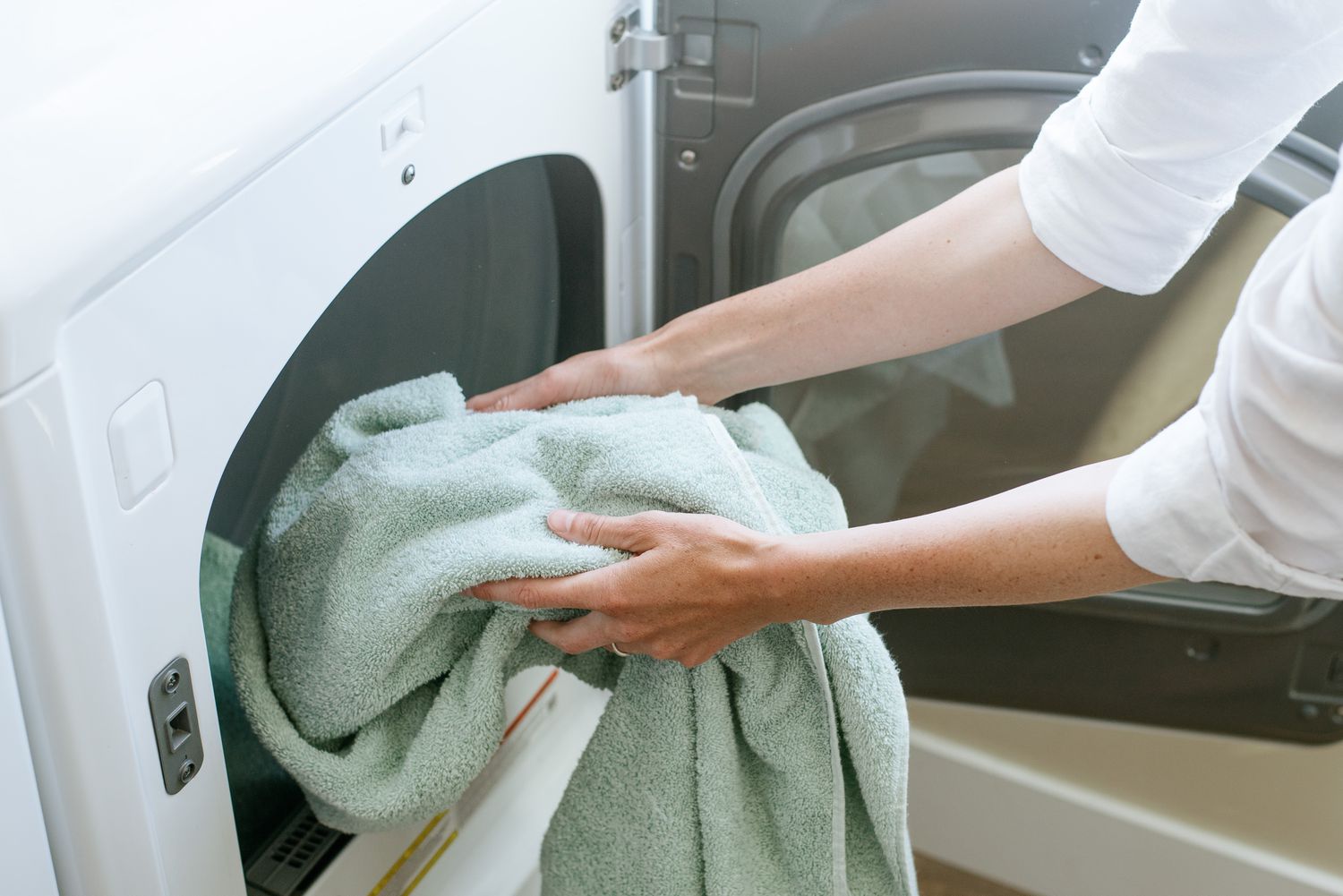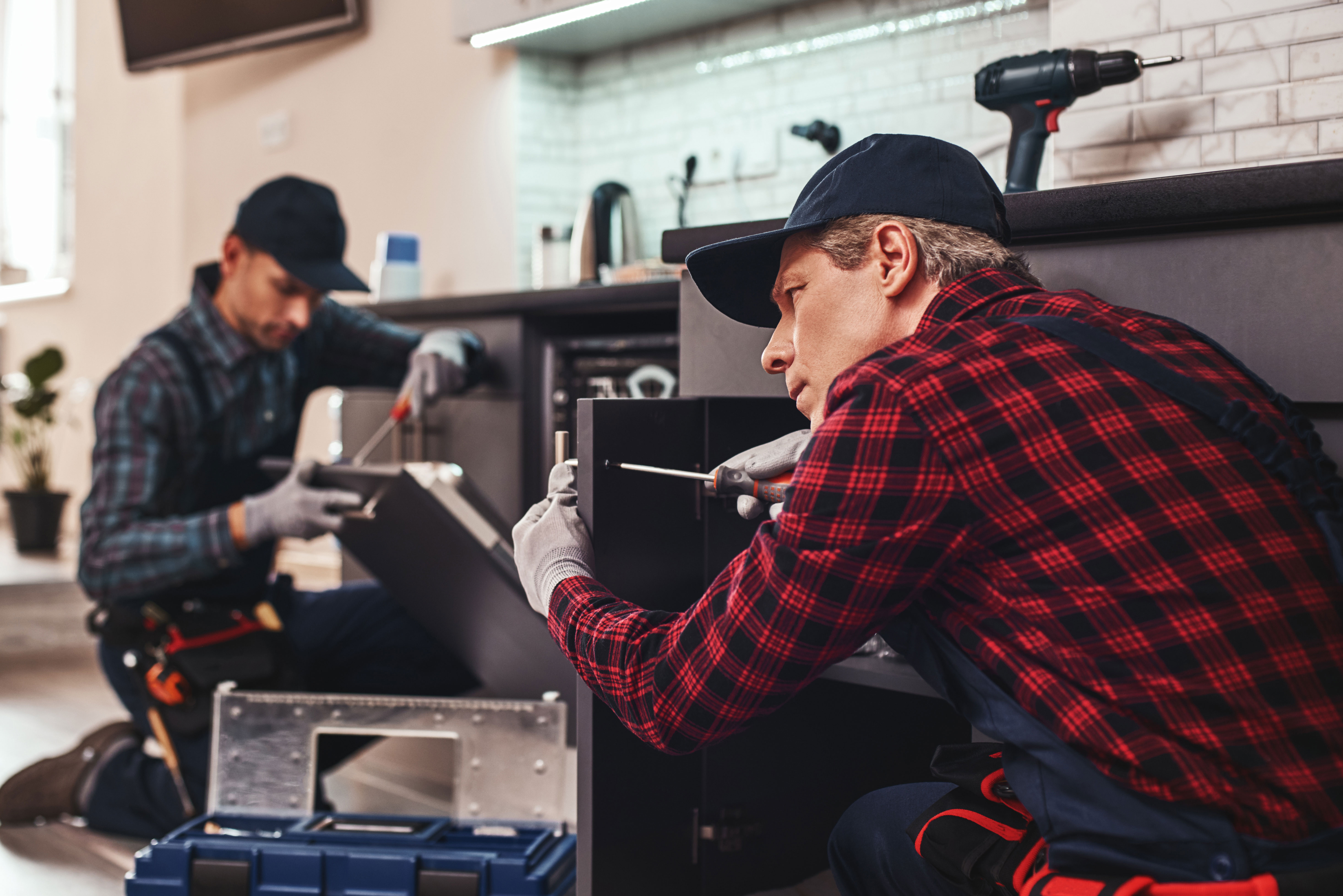Dryer Not Drying Clothes: What to Check and How to Fix?
Dealing with a dryer that refuses to dry clothes can be frustrating, disrupting the seamless flow of household chores. In this comprehensive guide, we embark on a journey to unravel the mysteries behind ineffective drying. From understanding the basics of dryer operation to exploring common reasons for damp clothes, we'll delve into DIY troubleshooting techniques and examine critical components like the heating element and thermostat. Additionally, we'll shed light on the often-overlooked factor of proper ventilation, explaining its pivotal role in drying performance. Join us as we navigate through practical solutions and identify when it's time to seek professional expertise for a dryer that truly delivers on its drying promises.
Understanding the Basics of Dryer Operation: A Guide to Drying Cycles and Components
Clothes dryers, though seemingly straightforward, operate through a sophisticated interplay of various components and drying cycles. This section will delve into the essential elements of a clothes dryer, offering insights into the mechanics behind different drying cycles and identifying key components crucial for an effective drying process.
Exploring Drying Cycles
Dryers feature an array of drying cycles designed to cater to different fabric types and moisture levels. From delicate and permanent press to heavy-duty cycles, each serves a specific purpose. Understanding the nuances of these cycles ensures optimal drying results while preserving the integrity of various fabrics.
Key Components in Drying
Heat source, airflow, and moisture extraction are pivotal elements in the drying equation. The heating element warms the air, the blower circulates it, and the moisture sensor or thermostat regulates the drying temperature. By unraveling the roles of these components, users gain a comprehensive understanding of the intricate drying process.
Moisture Sensors and Thermostats
Moisture sensors detect the dampness of clothes, signaling the dryer to continue or conclude the drying cycle based on the detected moisture levels. Thermostats, on the other hand, maintain the desired temperature. Both components work synergistically to achieve efficient and energy-saving drying results.
Airflow and Ventilation
Proper airflow is vital for effective drying. The dryer's blower propels air through the heating element and into the drum, facilitating moisture evaporation. Understanding the significance of adequate ventilation helps users troubleshoot issues related to damp clothes or prolonged drying times.
Timer-Based Drying
In addition to sensor-based drying, some models offer timer-based drying options. Users can manually set the drying time, providing flexibility in managing drying cycles. Exploring these options empowers users to tailor the drying process to their specific needs.
Energy-Efficient Features
Modern dryers often incorporate energy-efficient features such as auto-sensing and cool-down phases. Auto-sensing adjusts drying time based on moisture levels, while the cool-down phase prevents clothes from wrinkling. Familiarizing oneself with these features enhances the overall efficiency of the drying process.
In essence, understanding the basics of dryer operation involves unraveling the intricate dance of heating elements, sensors, and airflow. Armed with this knowledge, users can optimize their dryer usage, ensuring clothes are efficiently dried while prolonging the lifespan of the appliance.
Common Reasons for Ineffective Drying: Unraveling the Culprits Behind Damp Clothes
Despite the advanced technology in modern dryers, encountering damp clothes after a drying cycle can be frustrating. In this section, we will identify and explore the potential culprits that contribute to a dryer's ineffective drying, shedding light on issues ranging from ventilation problems to malfunctioning heating elements.
Ventilation Issues
Poor ventilation is a primary culprit for inefficient drying. A clogged or restricted vent hampers the airflow necessary for moisture evaporation. We will delve into the importance of clear vents and offer solutions for addressing ventilation issues, ensuring optimal drying performance.
Clogged Lint Filters
A frequently overlooked but crucial component, the lint filter, plays a key role in preventing lint buildup in the dryer and vent system. We'll discuss the impact of a clogged lint filter on drying efficiency and provide guidance on regular maintenance to avoid this common issue.
Faulty Moisture Sensors
Moisture sensors are integral for gauging the dryness of clothes. Malfunctioning sensors can lead to premature cycle completion or extended drying times. This section will explore signs of sensor issues and offer insights into troubleshooting and potential repairs.
Heating Element Malfunctions
The heating element is responsible for generating the warm air essential for drying clothes. Malfunctions can result in inadequate heat, leading to damp clothes. We'll examine common heating element issues and provide steps for diagnosing and resolving these problems.
Thermostat Irregularities
The thermostat regulates the dryer's temperature, ensuring it remains within the optimal range. Irregularities in thermostat function can impact drying effectiveness. We'll discuss symptoms of thermostat issues and guide users through the steps to address these irregularities.
Drum Seal and Gasket Concerns
Damaged drum seals or gaskets can allow warm air to escape, reducing the overall efficiency of the drying process. This section will explore how to identify seal and gasket issues and offer solutions for ensuring a proper seal to enhance drying performance.
By unraveling these potential culprits, users can troubleshoot and address issues affecting their dryer's ability to dry clothes effectively. Understanding the intricacies of each problem empowers users to maintain their dryers, ensuring optimal performance and the longevity of the appliance.
DIY Troubleshooting Techniques: Step-by-Step Inspection and Repair Tips
When your dryer falls short of delivering dry clothes, embarking on a DIY troubleshooting journey is a practical approach. This section will guide you through step-by-step inspection and repair tips, empowering you to identify and address common issues independently.
Vent Inspection
Begin by examining the dryer vent for any obstructions or blockages. We'll walk you through the process of safely accessing and cleaning the vent, ensuring unrestricted airflow for efficient drying.
Lint Filter Maintenance
A clogged lint filter can impede airflow and diminish drying performance. Learn how to locate, remove, and clean the lint filter properly, preventing lint buildup that may compromise your dryer's effectiveness.
Check for Proper Installation
Improper installation can hinder the dryer's efficiency. We'll provide a checklist for verifying correct installation, covering aspects such as leveling, adequate spacing, and ensuring the exhaust vent is appropriately connected.
Assess Moisture Sensor Function
Understand the role of moisture sensors in determining dryness levels. We'll guide you on conducting a simple test to check sensor functionality and offer insights into recalibrating or replacing sensors if needed.
Heating Element Inspection
A malfunctioning heating element can be a significant contributor to damp clothes. Learn how to access and inspect the heating element, identifying common issues and potential solutions to restore optimal heat generation.
Thermostat Evaluation
Check the thermostat for irregularities that may affect temperature regulation. We'll provide instructions on testing thermostat functionality and steps for recalibration or replacement if necessary.
By following these DIY troubleshooting techniques, you'll gain the confidence to perform a comprehensive inspection of your dryer. Armed with practical repair tips, you can address issues promptly, ensuring your dryer operates at peak efficiency and keeps your clothes perfectly dry.
Heating Element and Thermostat Examination: Vital Components for Efficient Drying
In the pursuit of resolving your dryer's inefficiency in clothes drying, this section zooms in on two pivotal components – the heating element and thermostat. Understanding their roles and conducting a thorough inspection are crucial steps toward restoring optimal drying performance.
Heating Element Overview
Delve into the fundamental function of the heating element, which generates the heat necessary for drying clothes. We'll explore how this component operates and its significance in the overall drying process.
Inspecting the Heating Element
Walkthrough the process of accessing and inspecting the heating element. Learn to identify common issues such as burns, breaks, or malfunctions that may impede the element's ability to generate sufficient heat for effective drying.
Thermostat's Role in Temperature Regulation
Gain insights into the thermostat's role in maintaining the correct temperature during drying cycles. Understanding how the thermostat operates is key to identifying irregularities that might be affecting your dryer's performance.
Checking the Thermostat
Step-by-step guidance on checking the thermostat for malfunctions. Learn to recognize signs of thermostat irregularities, such as inaccurate temperature readings or failure to regulate heat, and how these issues can impact drying efficiency.
Diagnostic Testing
Explore diagnostic tests that can be performed on both the heating element and thermostat. These tests will help you pinpoint specific problems, enabling a more precise and effective approach to addressing issues and restoring optimal functionality.
By focusing on the heating element and thermostat, users can systematically examine and troubleshoot critical components affecting their dryer's efficiency. Armed with knowledge about these vital elements, you'll be better equipped to identify, address, and potentially resolve issues, ensuring your dryer operates at its best.
Ventilation Matters: The Impact of Proper Airflow on Drying Performance
In the quest for efficient clothes drying, the role of proper ventilation cannot be overstated. This section dives into the critical importance of ensuring optimal airflow in your dryer, shedding light on how inadequate ventilation can lead to unsatisfactory drying results. Additionally, we'll provide practical tips for improving dryer ventilation.
Understanding the Significance of Ventilation
Explore why proper ventilation is a cornerstone of effective clothes drying. Uncover the direct relationship between airflow and the drying process, emphasizing the need for unobstructed pathways within the dryer system.
Consequences of Inadequate Airflow
Delve into the potential consequences of insufficient airflow, such as extended drying times, uneven drying, and increased energy consumption. Understand how addressing ventilation issues can directly impact the overall performance of your dryer.
Identifying Ventilation Challenges
Learn to recognize common challenges related to dryer ventilation, including clogged vents, blocked ducts, or improper installation. We'll guide you through the diagnostic process to pinpoint specific ventilation issues that may be affecting drying performance.
Tips for Improving Dryer Ventilation
Receive practical tips and step-by-step instructions for enhancing ventilation within your dryer system. From routine maintenance to addressing specific ventilation challenges, these insights will empower you to optimize airflow for efficient drying.
Importance of Regular Ventilation Maintenance
Emphasize the significance of regular maintenance to ensure ongoing optimal ventilation. Discover how a proactive approach to ventilation care can prevent issues and contribute to consistent, reliable drying performance.
By understanding the impact of ventilation on drying outcomes and implementing effective ventilation improvement strategies, you'll be better equipped to address this crucial aspect of your dryer's functionality.
When to Seek Professional Help: Signs That It's Time for a Technician
While DIY troubleshooting is valuable, certain signs indicate that your drying problem may surpass the realm of at-home fixes. In this segment, we'll pinpoint key indicators prompting users to seek the expertise of a professional dryer technician.
Persistent Malfunctions
Explore scenarios where recurrent issues persist despite DIY efforts. Recognize patterns of repeated malfunctions that may signal an underlying problem requiring professional attention.
Unusual Noises or Smells
Understand the significance of unusual sounds or odors emanating from your dryer. Uncover the potential implications of these sensory cues and why they may warrant the intervention of a skilled technician.
Failure to Respond to DIY Fixes
Acknowledge situations where attempted DIY fixes yield minimal or no improvement. Discover when the lack of positive results from troubleshooting indicates the need for a thorough assessment by a professional.
Complex Component Replacements
Discuss the challenges associated with intricate component replacements. Identify instances where replacing critical elements, such as motors or control panels, goes beyond the scope of typical DIY repairs, necessitating professional expertise.
Electrical or Wiring Concerns
Shed light on the risks associated with electrical issues or wiring concerns. Understand when symptoms like sparks, flickering lights, or irregular power supply demand the immediate attention of a qualified technician.
Preserving Appliance Warranty
Highlight the importance of adhering to appliance warranties. Learn how seeking professional assistance ensures that repairs align with manufacturer specifications, preserving warranty coverage and preventing potential voids.
By recognizing these signs, users can make informed decisions about when to transition from DIY efforts to professional dryer repair services. Knowing when to seek expert assistance ensures a comprehensive and safe resolution to persistent drying issues.







